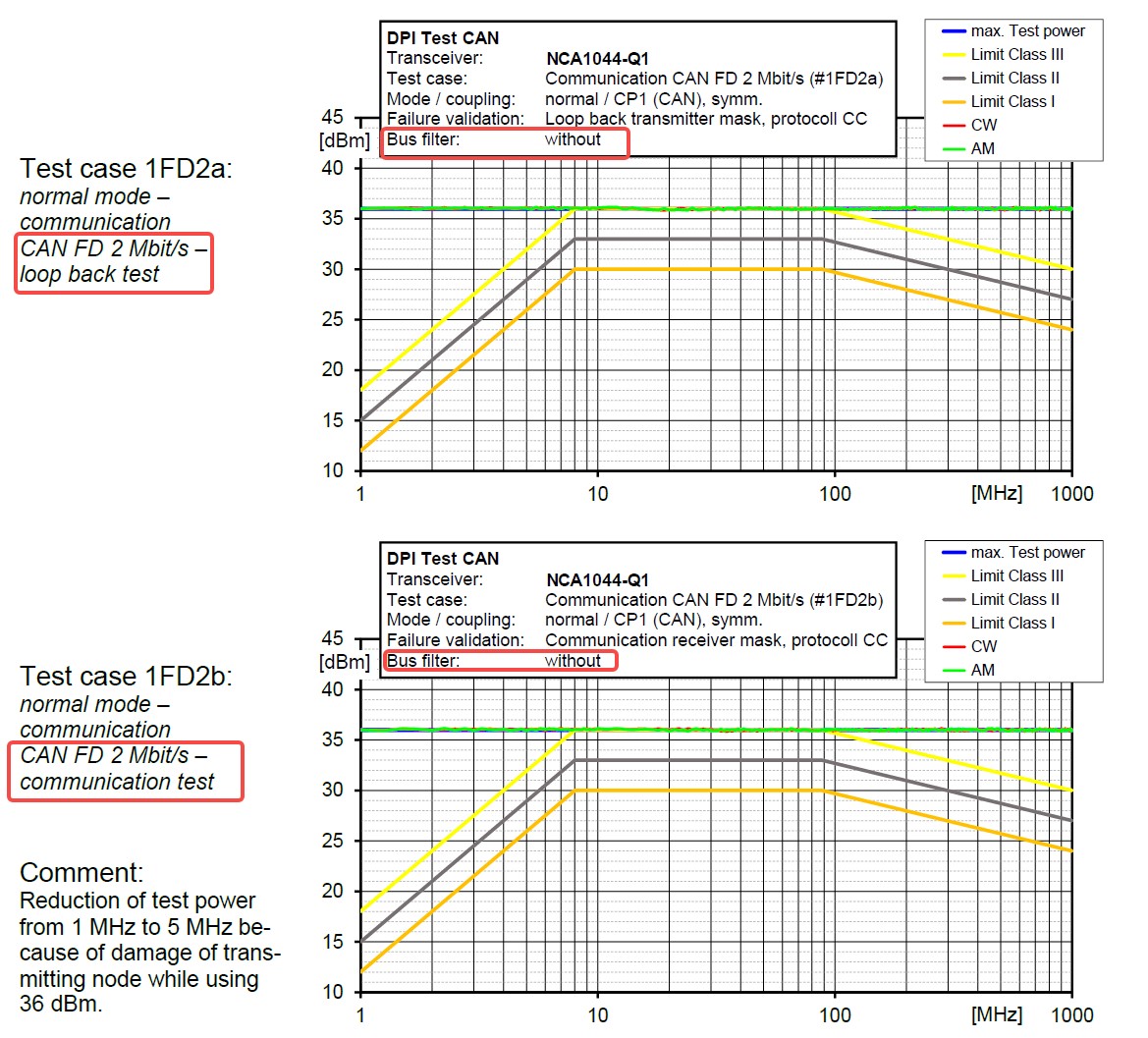2025/12/08
2025/11/05
2025/11/05
2024/11/19
NOVOSENSE announced that its newly launched NCA1044-Q1, an automotive-grade CAN transceiver, had received the EMC certification test reports from IBEE/FTZ-Zwickau, a prestigious European testing organization. NCA1044-Q1 successfully passed all test items. NOVOSENSE now can provide the test report to support automakers in streamlining their system certification process and accelerating their product launches.

CAN transceivers are commonly used in automotive CAN bus networks typically for critical control and diagnostics functions, such as battery, motor control, electronic control, braking, steering, and airbag systems. These applications are prone to various sources of electromagnetic interference (EMI), including battery, motor and electronic control systems for EVs, engine, frequency converter and wireless communication devices. Such disturbances can adversely affect data transmission, leading to signal errors or system failures, and even compromised system safety.
In addition, due to the long distance of CAN bus wiring in automotive systems, CAN transceivers can easily radiate noise through the CAN bus acting as an antenna. This can result in radiated emission and conducted emission from modules or the entire system that exceed the requirements for vehicle. Therefore, CAN transceivers that provide good electromagnetic compatibility (EMC) performance are essential for ensuring system reliability.
Full compliance with IBEE/FTZ-Zwickau certification
Given the critical role of CAN transceiver's EMC performance in automotive safety, countries or regions have established stringent automotive EMC standards and certification procedures for automakers to follow. For example, both the SAE J2962 standard and the European IBEE/FTZ-Zwickau certification set clear requirements for the EMC performance of automotive electronics.
The IBEE/FTZ-Zwickau certification is carried out according to the IEC 62228-3 standard. Compared with SAE J2962, IEC 62228-3 excludes the effects of peripheral circuits, focuses more on the EMC property of the CAN transceiver itself, and specifies higher performance level requirements. The IEC 62228-3 standard is also extensively adopted by automakers outside of Europe. The IBEE/FTZ-Zwickau certification includes four tests: Emission RF Disturbances, Immunity RF Disturbances, Immunity Transients, and Immunity ESD. NCA1044-Q1 from NOVOSENSE successfully passed all four tests.

Table-1: NOVOSENSE NCA1044-Q1 successfully passed all four tests
Industry-leading interference immunity
NCA1044-Q1 features an ingenious circuit design that addresses the issue of output signal errors caused by abnormal high-voltage interference affecting its output circuit. This enhances its EMC performance, helping customers substantially reduce their EMC design complexity, simplify peripheral components, and lower costs.
Furthermore, NCA1044-Q1 boasts industry-leading interference immunity. According to IEC 62228-3, when external RF noise at different frequency bands couples to the CAN bus, a higher pass-through power indicates stronger interference immunity. This means a lower risk of errors in the system.
Even without the use of a common-mode inductor filter on the bus, NCA1044-Q1 from NOVOSENSE can still meet the highest power requirements specified in the standard (as shown in Figure-1 and Table-2). Although this test is typically not required at the application level, NCA1044-Q1 still successfully passed the test. This capability helps users reduce peripheral circuits, lower costs, and enhance system robustness.

Figure-1: DPI test results of NCA1044-Q1
(The DPI performance of the device can be translated into a system-level BCI performance reference.)

Table-2: DPI test table for NCA1044-Q1
(The DPI performance of the device can be translated into a system-level BCI performance reference.)
Packages and selection
NCA1044-Q1 is now in mass production and is available in SOP8 and DFN8 packages. Compliant with the AEC-Q100 Grade 1 requirements, it operates in a wide temperature range from -40°C to 125°C, and provides over-temperature protection. NCA1044-Q1 also supports TXD dominant timeout function and remote wake-up in standby mode. Samples are now available, can be applied through NOVOSENSE's official website or contact the sales team (sales@novosns.com).